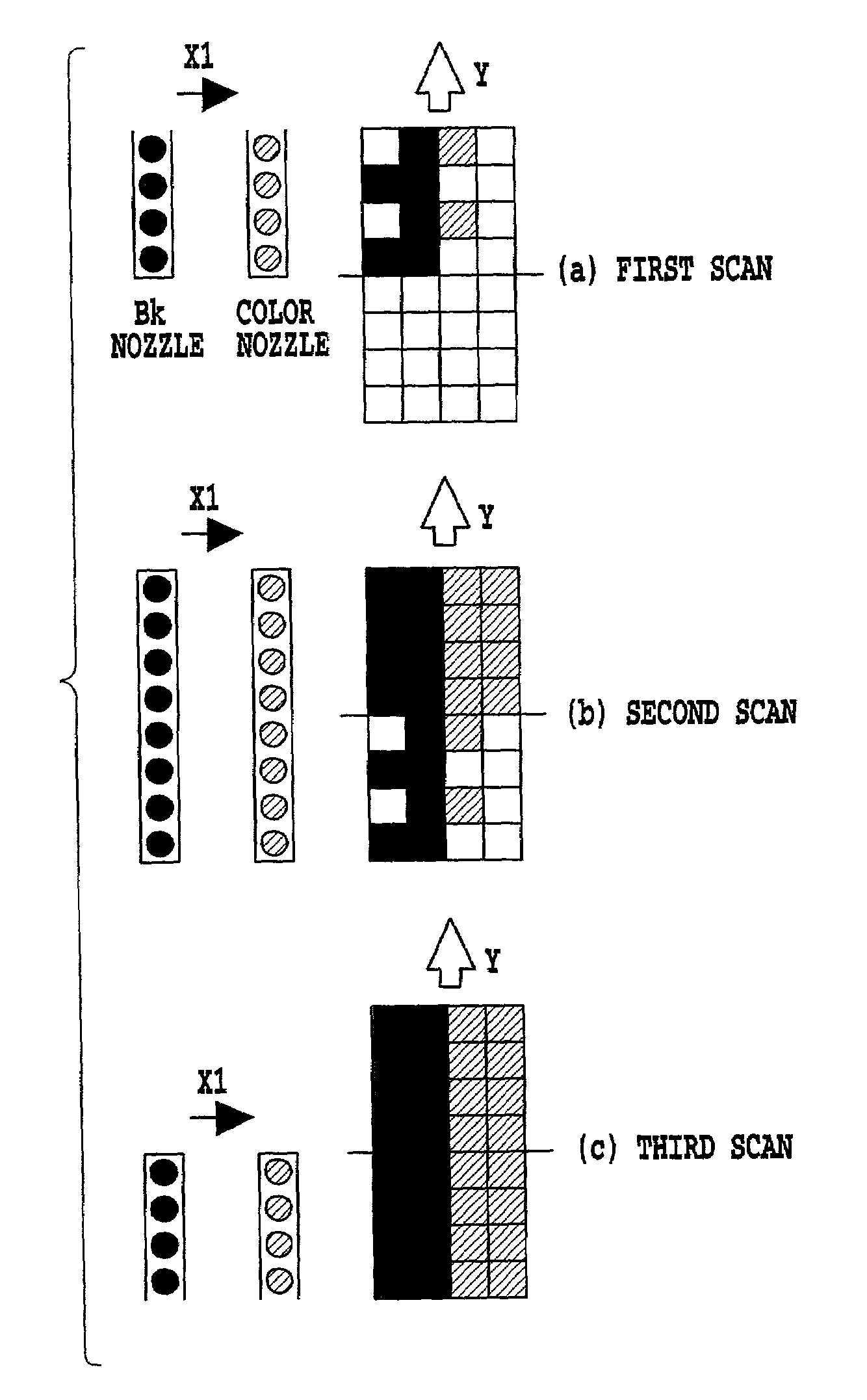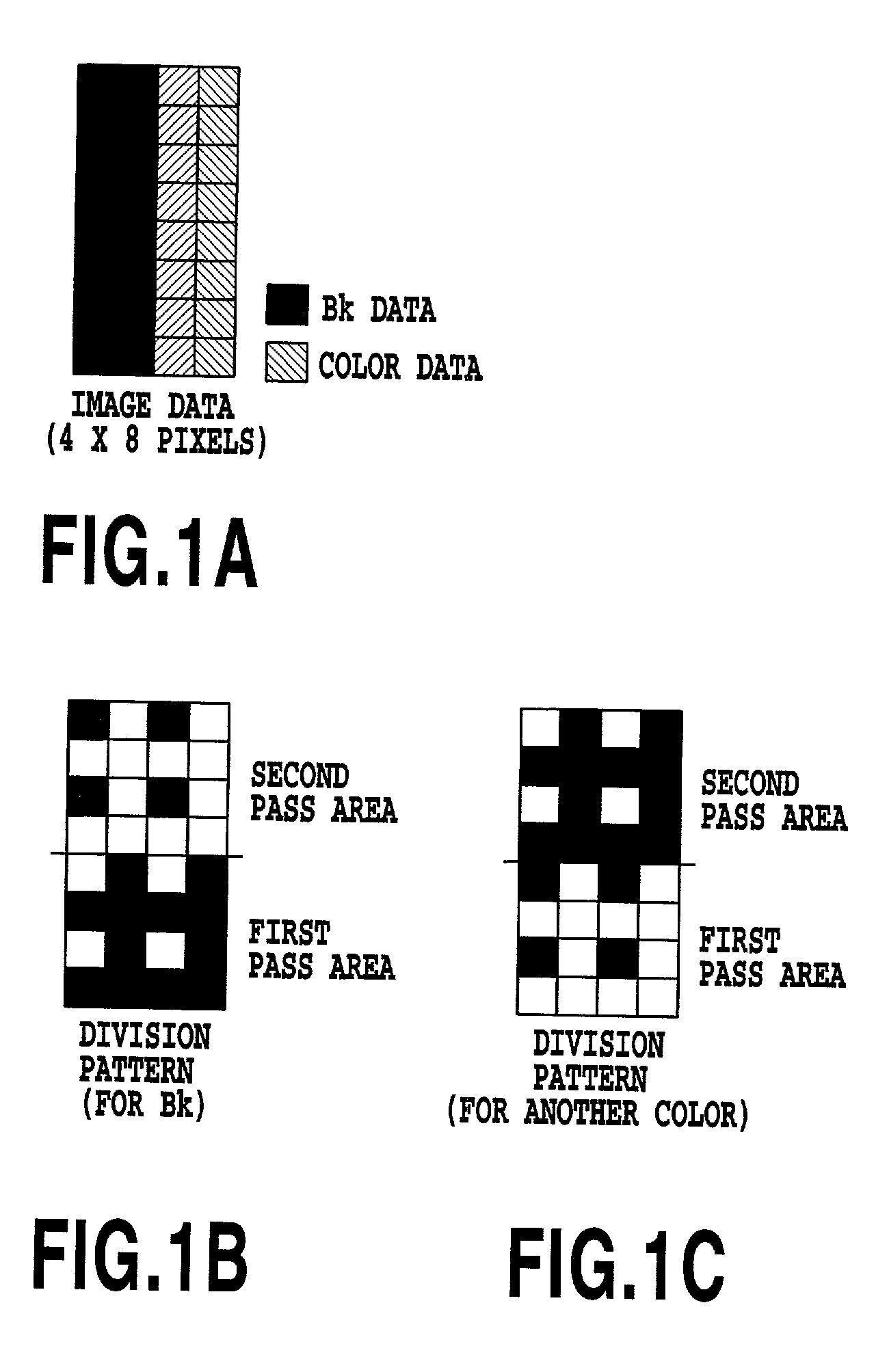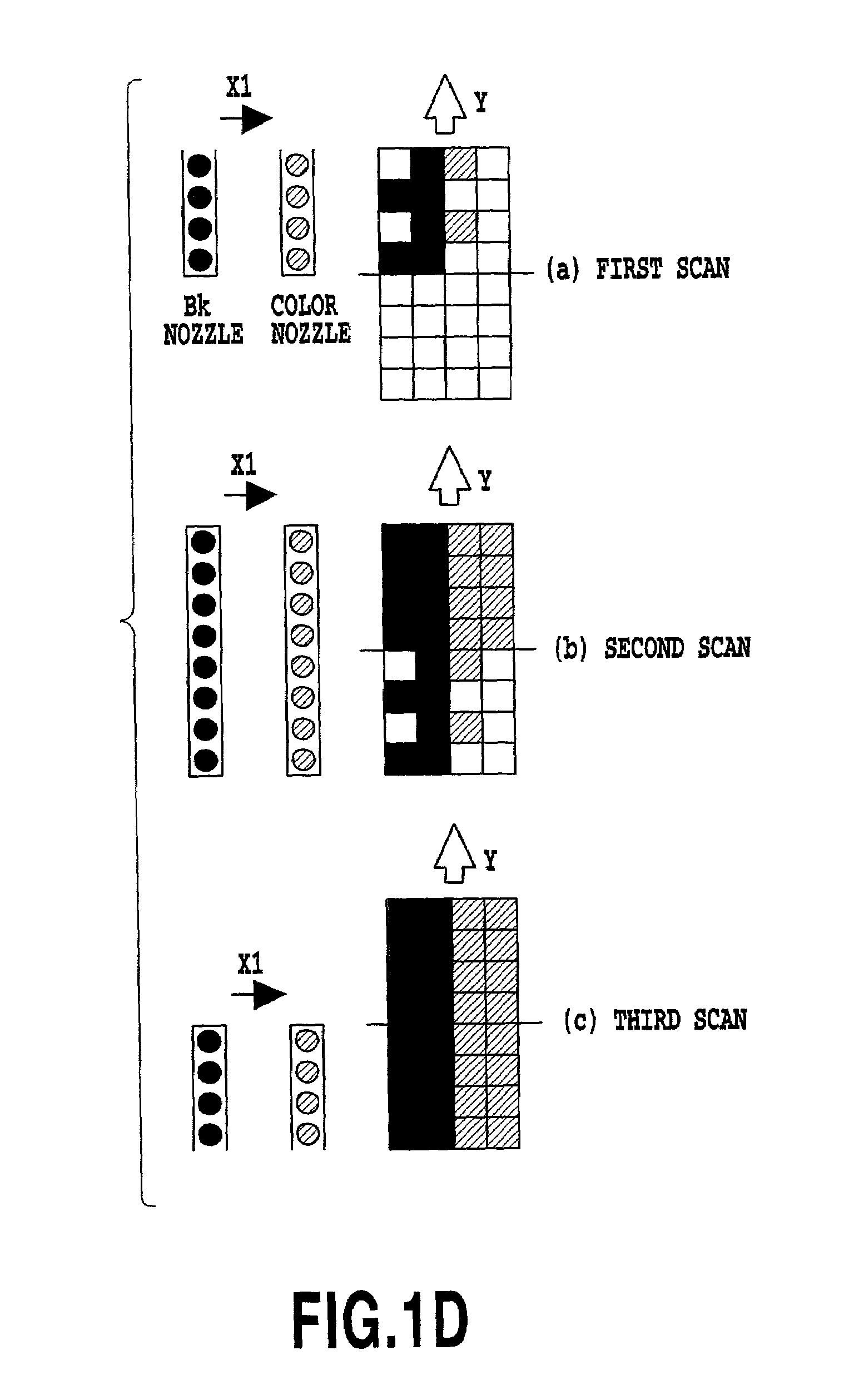Color ink-jet recording apparatus and method and method of processing image data
a color inkjet and recording apparatus technology, applied in the field of color inkjet recording apparatus, can solve the problems of insufficient recording quality, low image density, and inability to achieve the effect of reducing the number of images,
- Summary
- Abstract
- Description
- Claims
- Application Information
AI Technical Summary
Benefits of technology
Problems solved by technology
Method used
Image
Examples
fourth embodiment
[0085]It is assumed that the 4×8 solid image data shown in FIG. 9A is input as Bk image data as in the fourth variation. In this case, in this fifth variation, the thinning pattern shown in FIG. 9B is used to thin the black Bk image data so that it has a recording duty of 75%, thereby obtaining the thinned data shown in FIG. 9C. This thinned data is recorded using the black Bk division pattern as in the case with the FIGS. 10A to 10F shows this recording process.
[0086]In this manner, in the fifth variation, 25% of the black Bk image data is thinned in advance so that the black Bk image data has a recording density of 75%, thereby preventing the overflow of the ink on the recording medium associated with the placement of the color ink on the black Bk ink. Further, the cyan, magenta, and yellow ink is caused to impact the pixels from which the black Bk data has been thinned so that these ink types are combined together form a black Bk image. This prevents a possible void in the recor...
second embodiment
[0094]For both black Bk and other colors, the division patterns used for this variation are switched between an even-number scan and an odd-number scan, similarly to those employed in the above described Further, if data is recorded on 8×8 pixels to form a black Bk image, then the corresponding black Bk data is 75% thinned data obtained by thinning 25% of the original image data using a thinning pattern as shown in FIG. 12C, and the corresponding overlapping color data is as shown in FIGS. 12D and 12E.
[0095]In this case, during the first scan recording process shown in (a) in FIG. 12F, data is recorded on the upper 8×4 pixels of the 8×8 pixel area using the lower four nozzles of the recording head. First, the odd-number scan division patterns are used to record 100% of the overlapping data in the order of yellow, magenta and then record 75% of the overlapping cyan data. Then, 75% of the black Bk data is recorded.
[0096]Next, during the second scan shown in FIG. 12F and executed in t...
PUM
 Login to View More
Login to View More Abstract
Description
Claims
Application Information
 Login to View More
Login to View More - R&D
- Intellectual Property
- Life Sciences
- Materials
- Tech Scout
- Unparalleled Data Quality
- Higher Quality Content
- 60% Fewer Hallucinations
Browse by: Latest US Patents, China's latest patents, Technical Efficacy Thesaurus, Application Domain, Technology Topic, Popular Technical Reports.
© 2025 PatSnap. All rights reserved.Legal|Privacy policy|Modern Slavery Act Transparency Statement|Sitemap|About US| Contact US: help@patsnap.com



